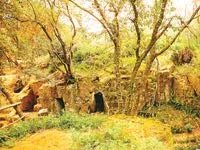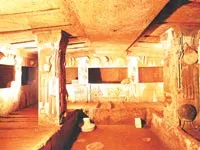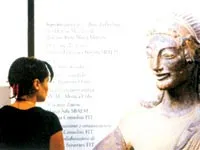Etruscan culture, a vibrant civilization that thrived in Italy before being absorbed by Rome, remains a captivating enigma for historians and travelers alike. Today, discovering Etruscan culture is not just about searching for desolate archaeological sites, but also embarking on a journey back in time through museums that preserve the memory of a vanished people. Have you ever wondered how to make the most of your trip to learn about ancient Etruscan civilization?
Introduction to the Etruscans and Their Legacy
The Etruscans, with their unique and sophisticated culture, left a profound mark on the Italian peninsula. From art and architecture to religion and language, the Etruscans made significant contributions to the region’s development. However, much of what we know about them comes from excavated tombs and funerary artifacts, making museums crucial in preserving and interpreting the Etruscan legacy.
Journey to Discover Etruscan Culture Through Museums
National Etruscan Museum of Villa Giulia, Rome
Villa Giulia is one of the world’s most important museums for Etruscan art. It displays a rich collection of artifacts, from distinctive black Bucchero pottery to stone sculptures and exquisite gold jewelry. The highlight of the museum is the Sarcophagus of the Spouses, a terracotta sarcophagus depicting a reclining married couple, showcasing the refinement and emotion in Etruscan art.

In addition, the museum presents Etruscan life, religion, and funerary customs through artifacts excavated from ancient tombs.
National Archaeological Museum of Tarquinia
Tarquinia, one of the most important Etruscan cities, houses an archaeological museum exhibiting artifacts found in the area, especially from the Tarquinia necropolis, famous for its colorful wall paintings.
The Tarquinia museum preserves an ancient vase crafted by the Athenian artisan Nikosthenes around the 5th century BC and a wine vessel made by Phintias. Winged horses and sparkling gold jewelry in display cases further enhance the mystical beauty of this civilization.

Reconstructed tomb paintings within the museum allow visitors to admire Etruscan art and culture vividly.
Guarnacci Museum, Volterra
Volterra, an Etruscan city perched on a hilltop in Tuscany, boasts the Guarnacci Museum, one of the oldest Etruscan collections in Europe. The museum is renowned for its collection of elaborately decorated stone ash urns, reflecting Etruscan artistic styles and beliefs.
A highlight of the museum is the Ombra della Sera (Shadow of the Evening), a small yet graceful bronze statuette, demonstrating the sophistication and skill of Etruscan artisans.
Other Local Museums
Besides major museums, many towns and villages in the ancient Etruria region (present-day Tuscany, Lazio, and Umbria) have smaller local museums displaying artifacts found in their areas. These museums often offer deeper insights into the local history and culture of the Etruscans. For example, the museums in Cerveteri and Veio preserve significant discoveries from nearby sites, providing further information about Etruscan life and art.

These museums are not just repositories of artifacts but also centers for research and education, helping the public better understand Etruscan culture and the importance of heritage preservation.
Tips for Visiting Etruscan Museums
- Plan ahead: Identify the museums you want to visit and check their opening hours, ticket prices, and special programs.
- Learn beforehand: Read about Etruscan history and culture to gain an overview before visiting the museum.
- Hire a guide: If possible, hire a local guide to get detailed and insightful information about the artifacts and Etruscan history.
- Allocate enough time: Etruscan museums have a lot to see and explore, so allow ample time to enjoy the experience.
- Combine with site visits: Combine museum visits with exploring Etruscan archaeological sites for a more comprehensive view of this civilization.
Etruscan Cuisine: Flavors of the Past
Although direct information about Etruscan cuisine is limited, archaeologists have found evidence of the foods and drinks they consumed. The Etruscans cultivated wheat, barley, beans, olives, and grapes. They also raised livestock, hunted, and fished. Wine was an important part of Etruscan culture, and they developed advanced winemaking techniques.
Today, you can savor modern dishes that evoke the flavors of the Etruscan past by seeking out restaurants serving dishes using similar ingredients and cooking methods.
Conclusion
Exploring Etruscan culture through museums is a fascinating journey back in time, offering you the opportunity to learn about a unique and mysterious civilization. By combining museum visits with exploring archaeological sites and enjoying local cuisine, you will have a rich and memorable travel experience. Let the ancient artifacts tell you the story of the Etruscans, and discover the secrets they left for the world.
References
- Haynes, S. (2000). Etruscan Civilization: A Cultural History. British Museum Press.
- Macnamara, E. (1973). Everyday Life of the Etruscans. Batsford.
- Barker, G., & Rasmussen, T. (1998). The Etruscans. Blackwell.